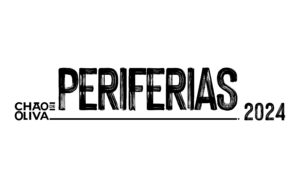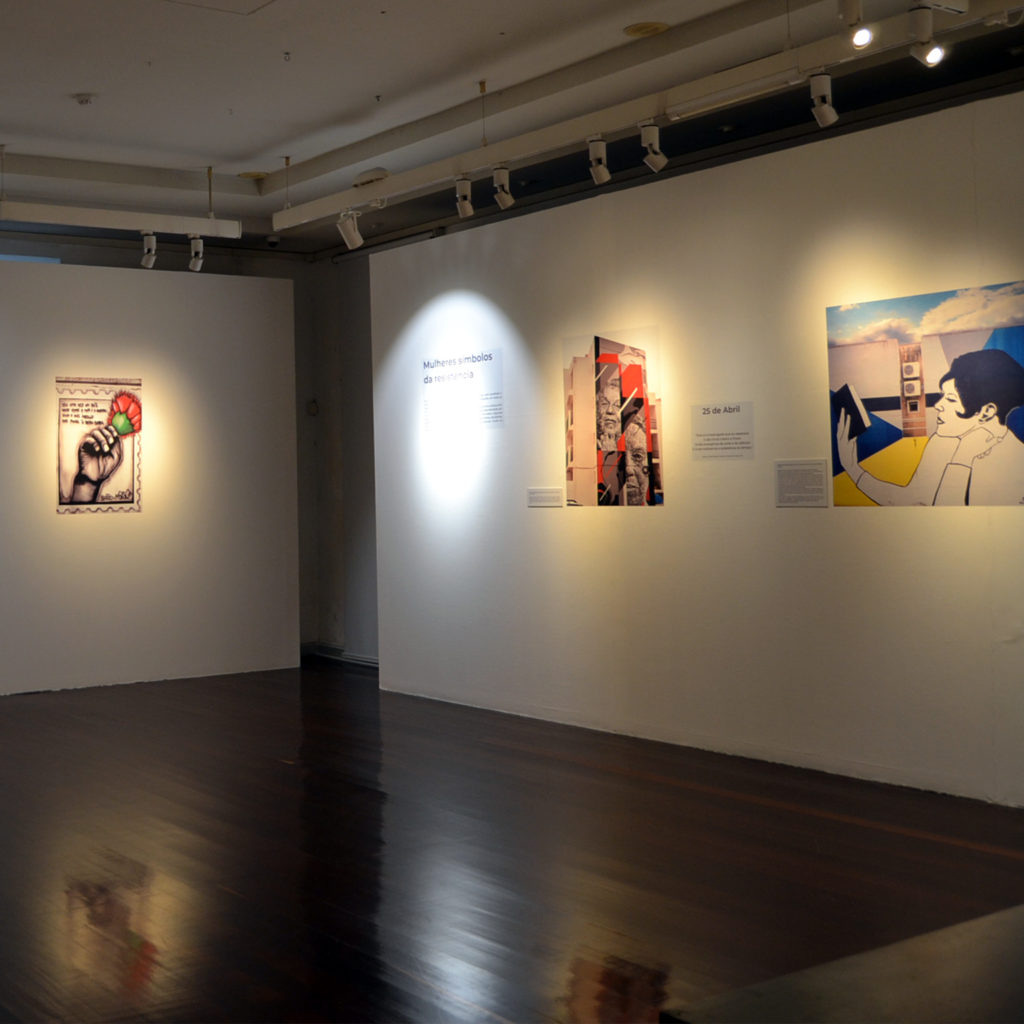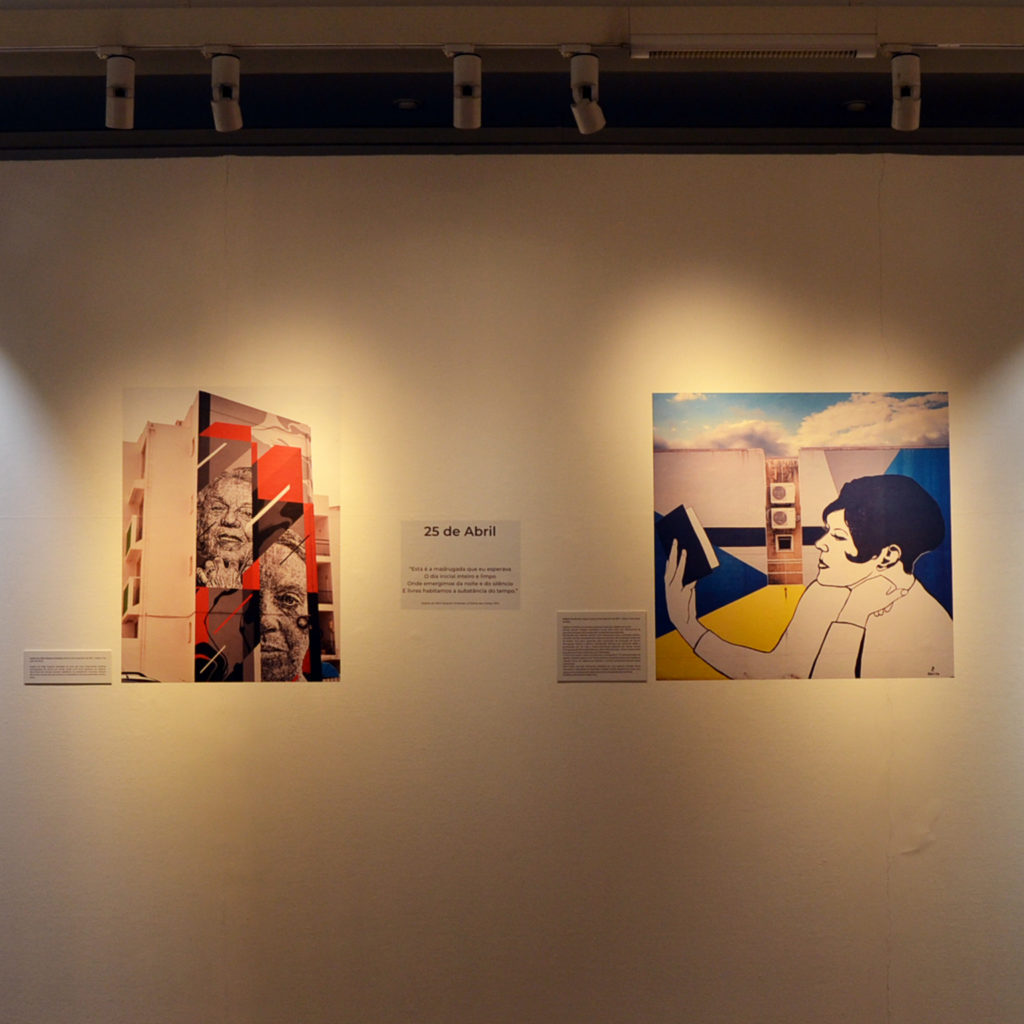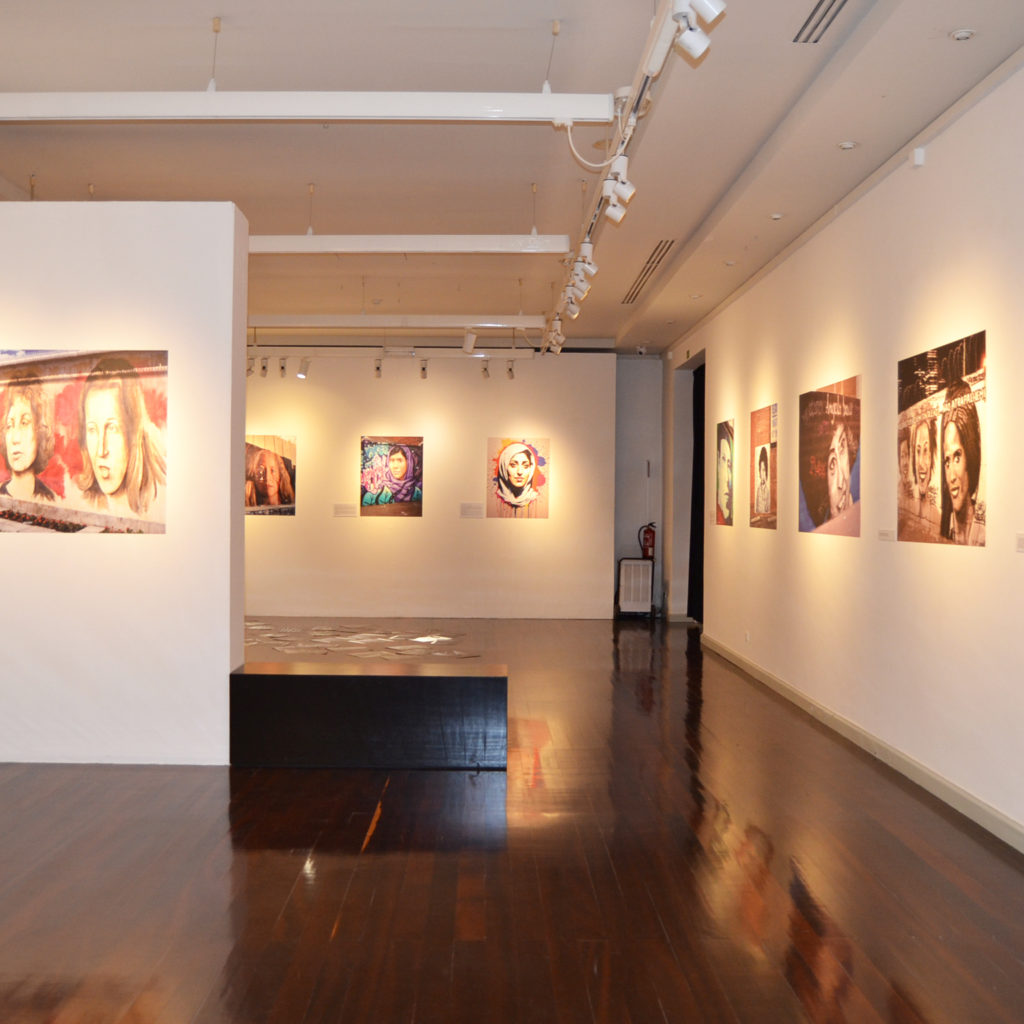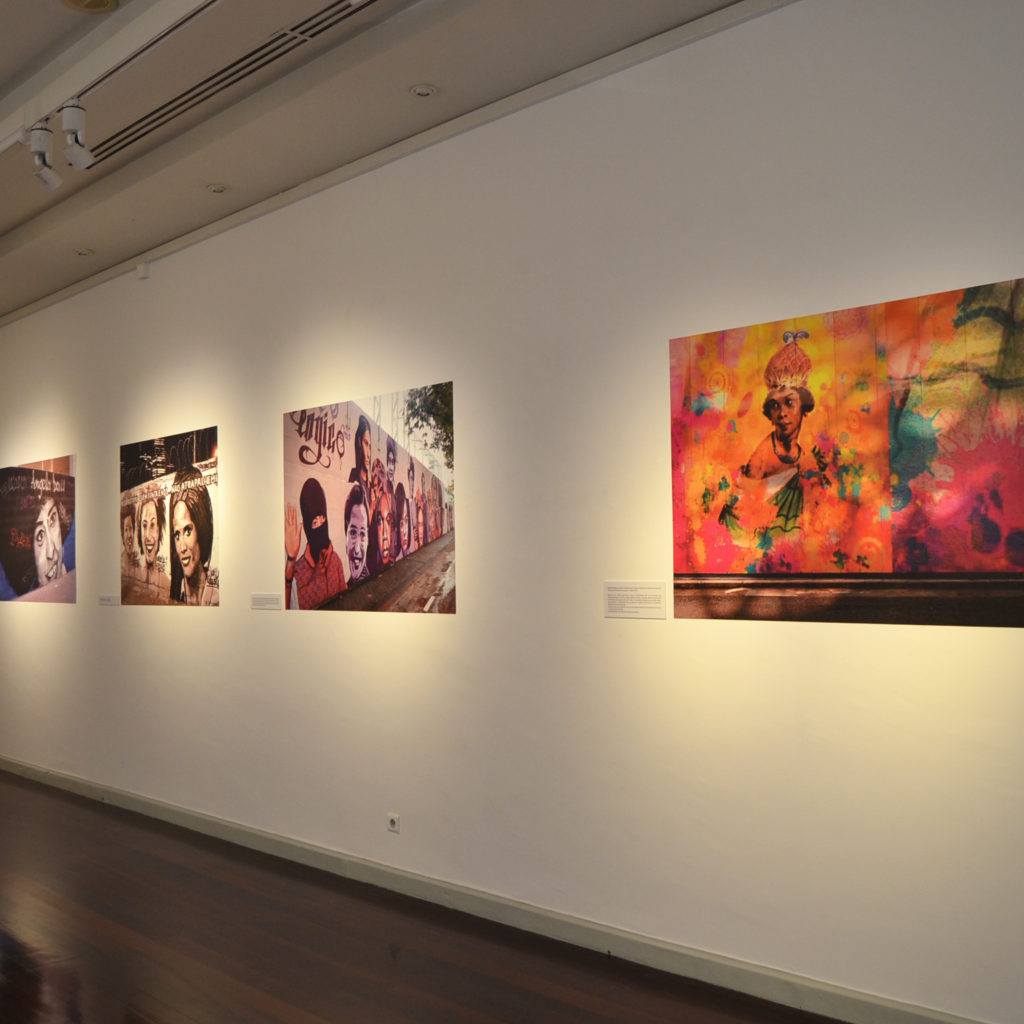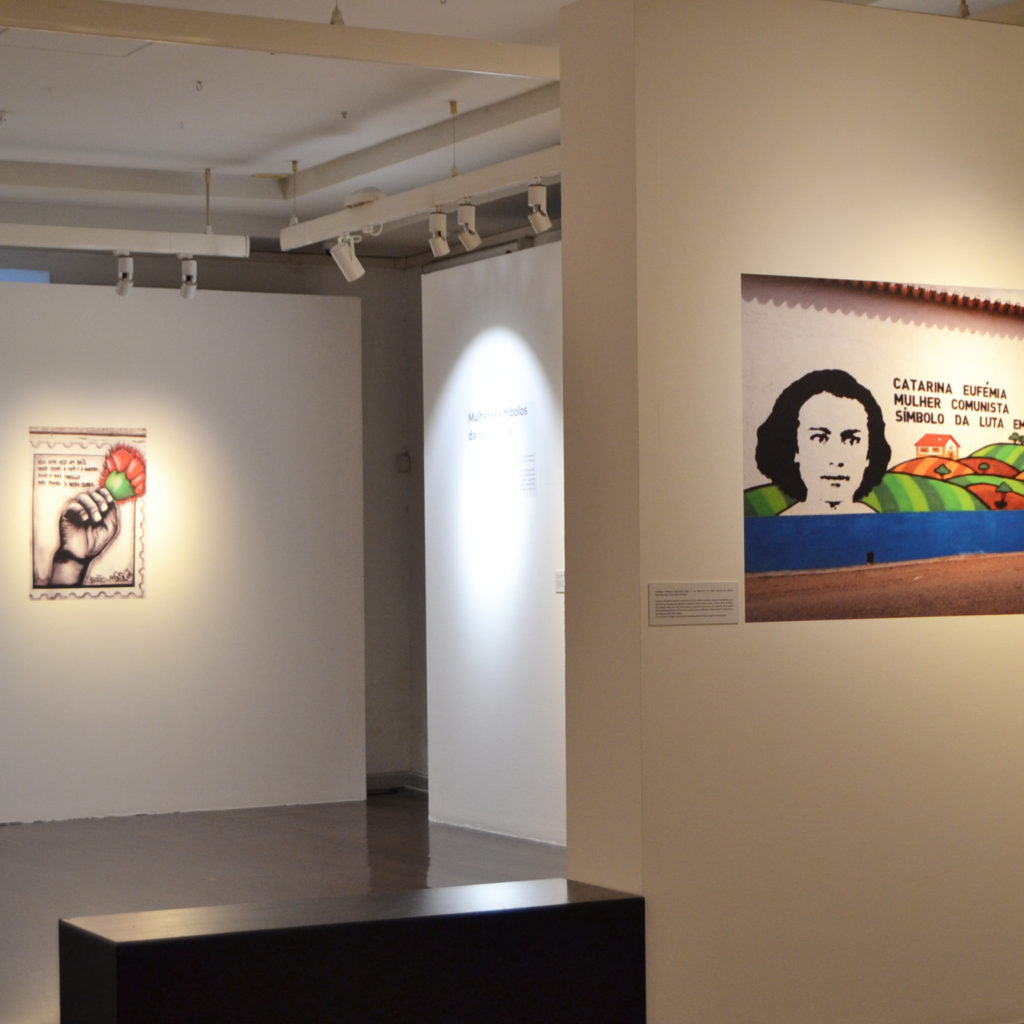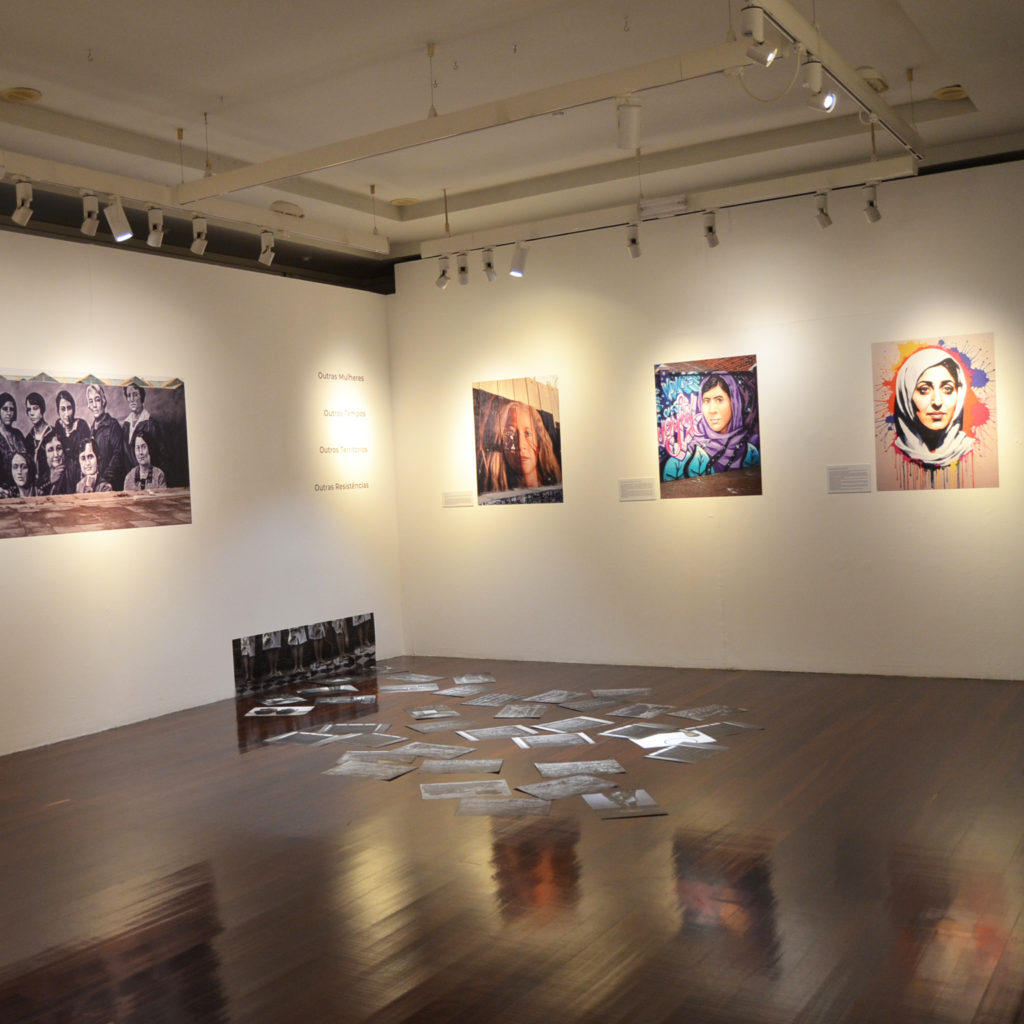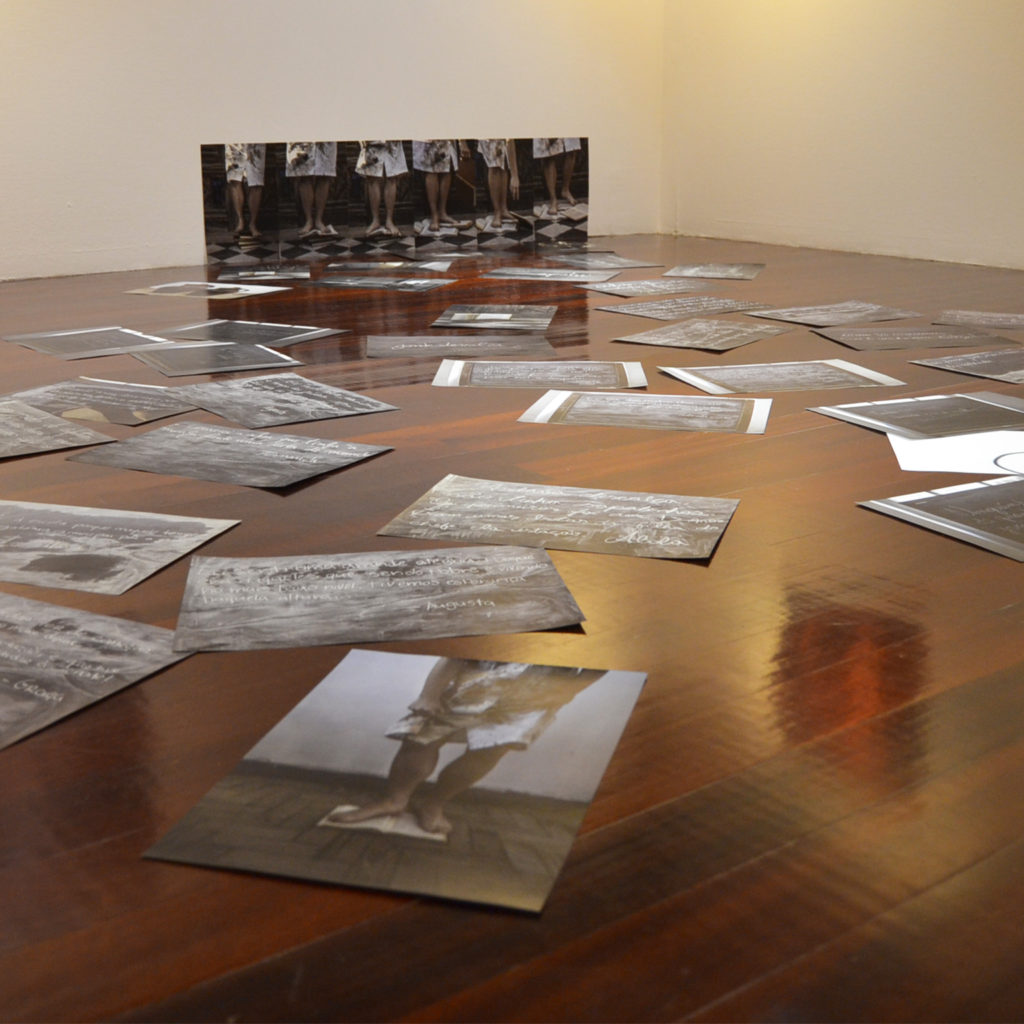
13º PERIFERIAS – Festival Internacional de Artes Performativas
13rd PERIFERIAS – International Performative Arts Festival
mulheres e territórios de resistência / resistance women and territories
DIAS 1 A 31 DE MARÇO | HORÁRIO DO MUSEU | MU.SA – MUSEU DE ARTES DE SINTRA
FORM THE 1st TILL THE 31st OF MARCH | MUSEUM HOURS | MU.SA – SINTRA’S MUSEUM OF ART
Curadoria de / Curated by Paula Pedregal
De / From Chão de Oliva (Sintra, Portugal)
Exposição / Exhibition
Público em geral / General Public
Entrada livre / Free entry
SINOPSE
‘Mulheres e Territórios de Resistência’ é a exposição criada pelo Chão de Oliva para o PERIFERIAS 2024, com curadoria de Paula Pedregal, co-diretora artística da associação.
Desde sempre as mulheres tiveram um importante papel nas resistências, nas lutas pelas liberdades e pelos direitos humanos, por isso nesta 13ª edição do festival, queremos falar delas. Relembrar algumas mulheres de Abril (as que foram símbolos de resistência) e algumas mulheres, espalhadas pelo mundo, que nos dias de hoje lutam contra regimes opressores.
____ . ____
SINOPSIS
‘Resistance Women and Territories’ is the exhibition created by Chão de Oliva for PERIFERIAS 2024, curated by Paula Pedregal, artistic codirector of the association.
Women have always had an important role in resistences, fights for freedom and human rights, so in ths 13rd edition of the festival, we wish to talk about them. We wish to recall come of the April’s women (the one’s who were symbols of resistance) and some women, spread out accross the globe, who fight against opressive regimes nowadays.
Mais sobre a exposição
Em 2024 Portugal celebra os 50 anos do 25 de Abril de 74.
O PERIFERIAS marca o evento celebrando e falando da liberdade, mas também dos vários atos de resistência que hoje assistimos. Em 2024 o festival decorre sob o tema “Geografia da Resistência”.
Dentro deste vasto tema, acentuamos o papel das mulheres nas transformações das sociedades ao longo da história na exposição ‘Mulheres e Territórios de Resistência’.
A exposição contempla três núcleos: um primeiro núcleo com uma breve contextualização política: da ditadura à Revolução de 1974; um segundo núcleo dedicado à resistência (atos de resistência) das mulheres portuguesas (símbolos de resistência) durante ditadura até à revolução de Abril de 1974, com destaque para algumas figuras no campo das artes e da política e mulheres anónimas; um terceiro núcleo é dedicado à resistência de mulheres espalhadas pelo mundo, que na nossa contemporaneidade resistem, de alguma forma, a regimes opressores e/ou a situações que impedem / coartam as suas liberdades.
A mensagem é transmitida através de textos e fotografias de murais nacionais e internacionais de celebração destas mulheres, a par com uma intervenção especial criada por alunos da ESELx – Escola Superior de Educação de Lisboa, intitulada ‘Ir à Escola’.
____ . ____
More on the exhibition
In 2024 Portugal celebrates 50 years since April 25, 74 (date of the portuguese revolution, which ended the dictatorial regime and gave way to democracy).
PERIFERIAS marks the event by celebrating and talking about freedom, but also about the various acts of resistance that we are witnessing today. In 2024 the festival will take place under the theme “Geography of Resistance”.
Within this vast theme, we emphasize the role of women in the transformations of societies throughout history in the exhibition ‘Resistance Women and Territories’.
The exhibition includes three sections: a first section with a brief political contextualization: from the dictatorship to the 1974 Revolution; a second nucleus dedicated to the resistance (acts of resistance) of Portuguese women (symbols of resistance) during the dictatorship until the revolution of April 1974, with emphasis on some figures in the field of arts and politics and anonymous women; a third nucleus is dedicated to the resistance of women around the world, who in our contemporary times resist, in some way, oppressive regimes and/or situations that impede/restrict their freedoms.
The message is transmitted through texts and photographs from national and international murals celebrating these women, along with a special intervention created by students from ESELx – Escola Superior de Educação de Lisboa, entitled ‘Going to School’.
‘Ir à Escola’
‘Ir à Escola’ constitui uma abordagem à memória partilhada de várias mulheres que relatam a sua vivência quotidiana antes do 25 de abril de 1974. Dos testemunhos reunidos destacam-se, por um lado, as dificuldades em aceder à escolaridade básica e por outro, a dureza do trabalho desde tenra idade e as precárias condições de vida.
‘Ir à escola’ torna-se um ato de resistência quotidiana quando a comida escasseia e o caminho a percorrer descalça perfazia alguns quilómetros. As vozes que dão corpo à peça de fotografia instalativa são de mulheres do concelho de Santiago do Cacém e de Setúbal que conheceram as realidades do trabalho rural, do ensino primário e do trabalho fabril durante o Estado Novo.
‘Ir à escola’ interpela-nos, na primeira pessoa, acerca das desigualdades entre homens e mulheres, ricos e pobres, no acesso à educação- Quando, nas palavras de Fernanda “as oportunidades de uns não eram as oportunidades dos outros…”
____ . ____
‘Going to School’
‘Going to School’ constitutes an approach to the shared memory of several women who reported their daily experiences before April 25, 1974. From the testimonies gathered, the difficulties in accessing basic schooling stand out, on the one hand, and on the other, the hard work from a young age and the precarious living conditions.
‘Going to school’ becomes an act of daily resistance when food is scarce and the path to walk barefoot is just a few kilometers long. The voices that give shape to the photography installation are those of women from the municipality of Santiago do Cacém and Setúbal who experienced the realities of rural work, primary education and factory work during the Estado Novo (the portuguese dictatorship).
‘Going to school’ questions us, in the first person, about the inequalities between men and women, rich and poor, in access to education – When, in Fernanda’s words “the opportunities of some were not the opportunities of others… ”
Paula Pedregal
Formada em Teatro e, mais tarde, em Encenação pela Escola Superior de Teatro e Cinema de Lisboa, desenvolveu também a técnica O Método para o Ator, com Marcia Haufrecht. A Paula é atriz, encenadora, professora de teatro e codiretora artística do Chão de Oliva (desde 2020).
Como atriz, iniciou carreira no Teatro da Cornucópia, seguindo depois para o Teatro da Garagem. Participou ainda em vários projetos para televisão e cinema.
Como encenadora, começou por adaptar e encenar a “Crónica dos Bons Malandros” de Mário Zambujal, seguida da encenação de “As Criadas” de Jean Genet (2015) na Companhia de Teatro de Sintra. Recentemente, encenou “Bestas de Lugar Nenhum” (2022) e “Uma Escuridão Bonita” (2023) para a Companhia de Teatro de Sintra e “A Cruzada das Crianças” (2022) para a Fio d’Azeite, companhias residentes do Chão de Oliva.
____ . ____
Graduated in Theater and, later, in Directing at the Escola Superior de Teatro e Cinema de Lisboa, she also developed the technique The Method for the Actor, with Marcia Haufrecht. Paula is an actress, director, theater teacher and artistic co-director of Chão de Oliva (since 2020).
As an actress, she began her career at Teatro da Cornucópia, later moving on to Teatro da Garagem. She also participated in several television and film projects.
As a director, she began by adapting and staging Mário Zambujal’s “Crónica dos Bons Malandros”, followed by the staging of Jean Genet’s “As Criadas” (2015) at the Sintra Theater Company (Companhia de Teatro de Sintra). Recently, she staged “Bestas de Lugar Não” (2022) and “Uma Escuridão Bonita” (2023) for the Sintra Theater Company (Companhia de Teatro de Sintra) and “A Cruzada das Crianças” (2022) for Fio d’Azeite, resident companies of Chão de Oliva.
Chão de Oliva
O Chão de Oliva – Centro de Difusão Cultural em Sintra é uma associação cultural sem fins lucrativos, em funcionamento desde 1987. Com sede na Casa de Teatro de Sintra, desenvolve a sua atividade em três eixos principais, com diferentes projetos em cada um.
No eixo da Criação Teatral inclui a Companhia de Teatro de Sintra e o Fio d’Azeite – Grupo de Marionetas. A nível da Programação Cultural, destaca-se a realização anual do Periferias – Festival Internacional de Artes Performativas e o Programa de Acolhimentos. Na vertente dos Projetos Educativos e Comunitários é de realçar o projeto PARTEJ – Práticas Artísticas para o Empoderamento Juvenil, o projeto Marionetas S, a coorganização da MOSTRA – Mostra de Teatro das Escolas de Sintra e do Prémio Nacional das Artes do Espetáculo Maria João Fontainhas com a Câmara Municipal de Sintra e, claro, a Oferta Formativa na área Teatral.
____ . ____
Chão de Oliva – Cultural Diffusion Center in Sintra is a non-profit cultural association, operating since 1987. Based at the Sintra Theater House (Casa de Teatro de Sintra), it develops its activity along three main axes, with different projects in each one.
The Theatrical Creation axis includes the Sintra Theater Company (Companhia de Teatro de Sintra) and Fio d’Azeite – Grupo de Marionetas. In terms of Cultural Programming, the annual Periferias – International Festival of Performing Arts and the Welcome Program (Acolhimentos) for non-resident companies and artists stand out. In terms of the Educational and Community Projects axe, it is worth highlighting the PARTEJ – Artistic Practices for Youth Empowerment project, the Puppets S (Marionetas S) project for the elderdy community, the co-organization of MOSTRA – Sintra Schools Theater Exhibition and the National Prize for Performing Arts Maria João Fontainhas with the Sintra City Council and, of course, the Training Offer in the Theater area.
ESELx – Escola superior de educação de lisboa
A Escola Superior de Educação de Lisboa integra a rede de estabelecimentos do ensino superior politécnico de Lisboa, tendo dado início às suas atividades em 1985. A ESELx tem, no entanto, um longo passado como herdeira pedagógica de duas instituições de formação de educadores e professores – a Escola do Magistério Primário de Lisboa e o Instituto António Aurélio da Costa Ferreira.
Durante oito anos, de 1985 a 1993, a Escola desenvolveu atividades nos diversos domínios de intervenção que lhe foram atribuídos – formação inicial, contínua e especializada; profissionalização em serviço; investigação, pesquisa e desenvolvimento; prestação de serviços à comunidade – a par com as tarefas inerentes ao regime de instalação. Em 1 de Janeiro de 1994, na sequência da homologação dos estatutos da Escola, assumiu funções o Conselho Diretivo, eleito pelos membros da comunidade escolar.
Atualmente, tem por objetivos fundamentais: a formação de professores e outros agentes educativos com elevado nível de preparação nos aspetos cultural, científico, técnico e profissional; a formação humana, cultural, científica e técnica de todos os seus membros; a realização de atividades de pesquisa e investigação; a prestação de serviços à comunidade; o desenvolvimento de projetos de formação e reconversão de agentes educativos; o intercâmbio cultural, científico e técnico com instituições públicas e privadas, nacionais e estrangeiras, que visem objetivos semelhantes; a contribuição, no seu âmbito de atividade, para a compreensão internacional e para a aproximação entre os povos, com especial destaque para os países de língua oficial portuguesa.
____ . ____
The Lisbon’s Superior School of Education (Escola Superior de Educação de Lisboa) is part of the network of polytechnic higher education establishments in Lisbon, having started its activities in 1985. ESELx has, however, a long past as the pedagogical heir of two institutions training educators and teachers – the Lisbon Primary Teaching School and the António Aurélio da Costa Ferreira Institute.
For eight years, from 1985 to 1993, the School developed activities in the various areas of intervention assigned to it – initial, continuous and specialized training; professionalization in service; investigation, research and development; provision of services to the community – alongside the tasks inherent to the installation regime. On January 1, 1994, following the approval of the School’s statutes, the Board of Directors took office, elected by members of the school community.
Currently, its fundamental objectives are: the training of teachers and other educational agents with a high level of preparation in cultural, scientific, technical and professional aspects; the human, cultural, scientific and technical training of all its members; carrying out research and investigation activities; the provision of services to the community; the development of training and retraining projects for educational agents; cultural, scientific and technical exchange with public and private institutions, national and foreign, that pursue similar objectives; the contribution, within its scope of activity, to international understanding and to bringing people together, with special emphasis on Portuguese-speaking countries.
FICHA ARTÍSTICA & TÉCNICA / ARTISTIC & TECHNICAL CAST
Curadoria e Textos de / Curation and Texts by Paula Pedregal, Chão de Oliva | Assistência à Curadoria / Curatorial Assistence Luis Alves, Carlos Côxo e Nuno Correia Pinto | Execução Criativa / Creative Execution Carlos Côxo | Montagem Técnica / Technical Assembly Luiz Quaresma, Ton Bonassa, Nuno Correia Pinto | Criação Especial “Ir à Escola” concebida por / Special Creation “Going to School” made by Ana Pinheiro, Bárbara Góis, Carolina Carvalho, Inês Coelho, Kátia Sá, Robson Carvalho, Sandra Antunes, Sara Laranjo, Teresa Matos | From / Da ESELx – Escola Superior de Educação de Lisboa (Lisbon’s Superior School of Education) | Exposição inserida no / Exhibition included at MU.SA – Museu das Artes de Sintra (Sintra’s Museum of Arts) | Apoio / Sponsorship Câmara Municipal de Sintra (Sintra’s City Council)

